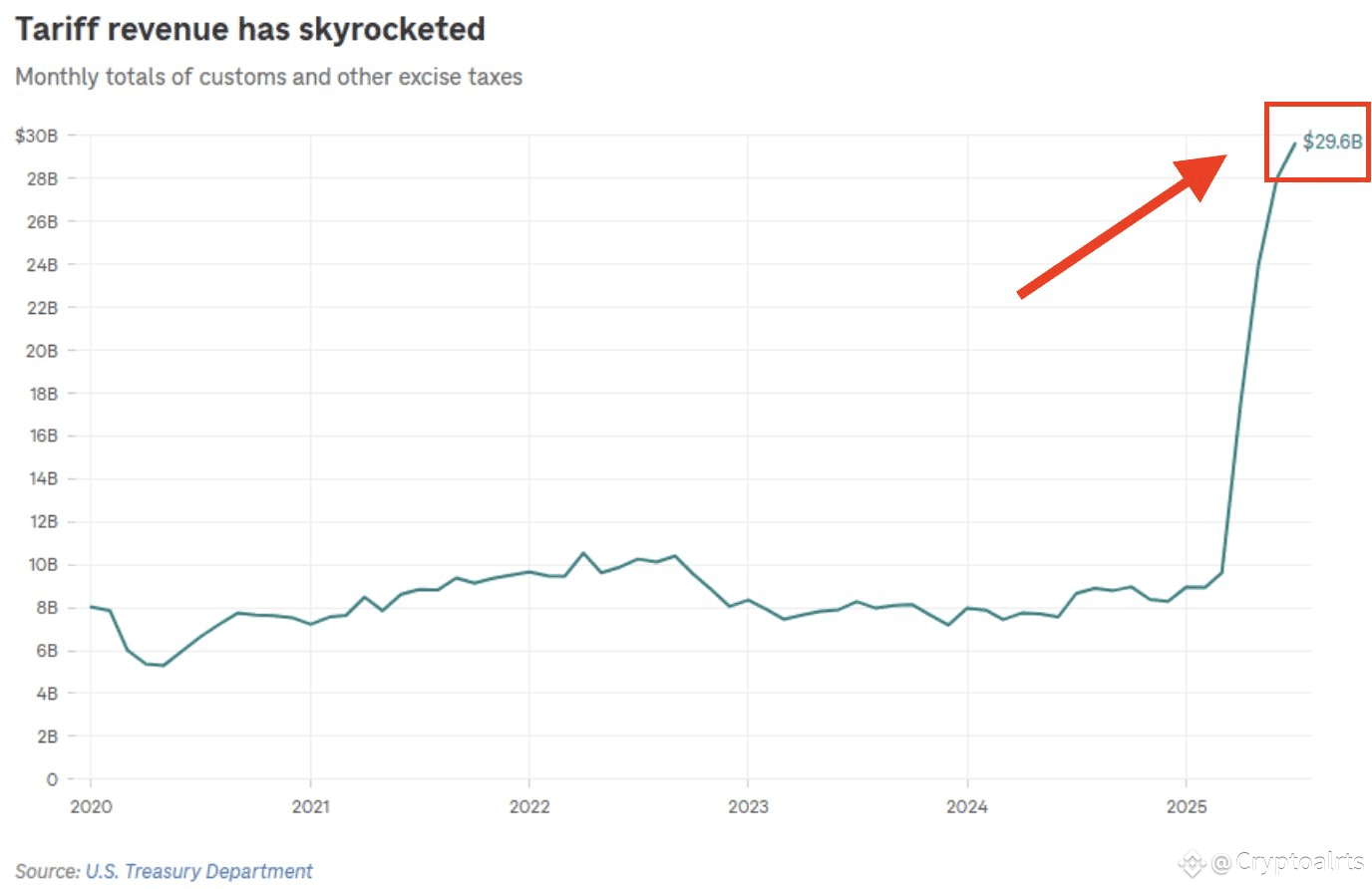
The surge in U.S. tariff revenue to $29.6 billion in July 2025—a +300% increase from late 2024—is a seismic shift in fiscal policy. Here’s what you need to know:
1. Unprecedented Revenue Growth
- Monthly tariff revenue has tripled from $7 billion in late 2024 to nearly $30 billion in July 2025, with projections suggesting it could hit $40–50 billion/month soon .
- At this pace, annualized revenue could exceed $350 billion, rivaling the fiscal impact of a new 1% payroll tax or a 17% cut to military personnel spending .
2. Where’s the Money Coming From?
New tariffs: Rates now range from 10% to 50%+ on imports (e.g., 50% on steel/aluminum, 35% on Canada, 15% on the EU) .
Who pays? U.S. businesses and consumers bear the cost through higher prices, functioning like a regressive tax—hurting lower-income households most (e.g., $1,300/year for bottom earners vs. $8,100 for top decile) .
3. Economic Trade-Offs
Pros:
Deficit reduction: Tariffs could generate $1.3 trillion through Trump’s term and $2.8 trillion by 2034, slowing debt growth .
Manufacturing boost: U.S. factory output may rise 2% long-term (e.g., textiles +3.8%) .
Cons:
GDP drag: Growth could drop 0.5% annually, with 505,000 fewer jobs by 2026 .
Price hikes: Short-term spikes in apparel (+37%), cars (+12%), and food (+3.4%) .
4. Legal & Global Risks
- Courts may strike down tariffs enacted under emergency powers, slashing projected revenue by $1 trillion+ if overturned .
- Retaliation and supply chain shifts could erode long-term gains (e.g., Canada’s economy may shrink 2.1%) .
5. The Big Picture
While tariffs inject historic revenue, they’re not a silver bullet:
Debt impact: Even $2.8 trillion over a decade is just ~7.5% of the $37 trillion national debt .
Structural deficits: July’s $291 billion deficit shows spending (e.g., Social Security, interest payments) still outpaces tariff gains .
Bottom Line: This is a high-stakes experiment—balancing revenue against economic pain. Whether it’s a masterstroke or misstep depends on how long tariffs last, legal outcomes, and whether the trade-offs are worth it.
